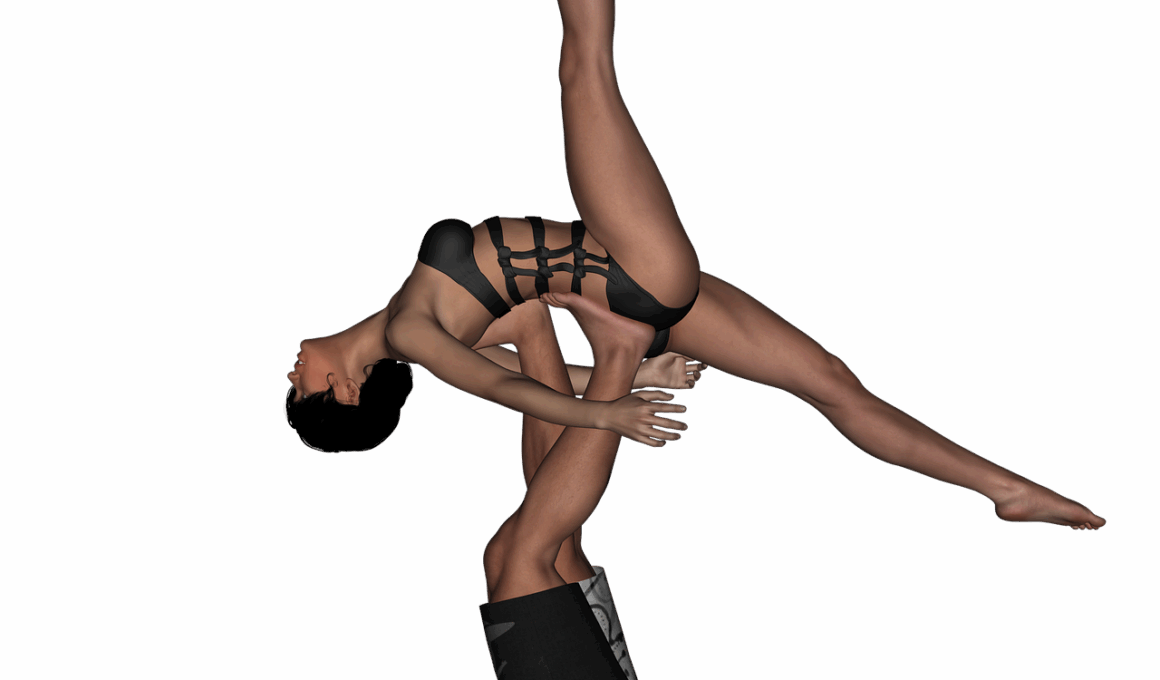Dance Therapy and Its Benefits
Dance therapy is an expressive form of therapy that integrates movement with emotional healing and self-discovery. It helps individuals express feelings and emotions that might be difficult to articulate through traditional therapeutic methods. This is particularly beneficial for older adults, where conventional communication may often miss the subtle emotions tied to aging. Dance therapy has been shown to improve physical coordination as well as cognitive functioning, offering a comprehensive approach to therapy. The practice not only aids in improving mental health but also brings about enhanced physical wellness. Through the rhythmic movements involved in dance, participants can foster emotional resilience and a greater sense of community. Research suggests that dance can address issues of isolation commonly found in older adults, fostering social interaction. The incorporation of music adds a rich layer, further engaging the mind and soul. Additionally, dance therapy involves various styles and techniques, making it versatile enough to cater to individual preferences. From ballet to modern dance and even traditional folk styles, there is something for everyone to enjoy. Dance therapy can effectively serve as a beautiful tool for holistic healing in the older demographic.
One of the standout advantages of dance therapy is its ability to enhance sleep quality in older adults. Studies show that physical activity, particularly in the form of dance, can significantly aid in the regulation of sleep patterns. Many older adults experience insomnia or disrupted sleep cycles due to various factors, including stress, medications, and physical ailments. Engaging in regular dance therapy sessions helps mitigate these issues by promoting relaxation and reducing anxiety, thus paving the way for improved sleep. For instance, rhythmic movements and the focus required during dance can help clear a racing mind, fostering a peaceful mental state before bedtime. Furthermore, the rigorous physical activity involved promotes fatigue, which naturally encourages deeper sleep. It can also help establish a bedtime routine, as the end-of-day dances can signal to the body that it’s time to wind down. This form of therapy also harnesses the power of social interaction, which is vital for emotional wellbeing. By participating in group dance activities, older adults not only improve their physical health but also enrich their social life, thereby addressing both emotional and physical aspects that contribute to their overall sleep quality.
Connection Between Dance and Sleep
The connection between dance and sleep goes beyond mere physical exertion; it involves complex psychological factors that contribute to relaxation and comfort. Dance therapy practices often emphasize mindfulness and presence, which are essential for stress management. Reducing stress levels through dance allows the body to release tension, which is often a key obstacle in achieving restful sleep. Many older adults harbor worries about health issues, family concerns, or isolation that impact their ability to sleep soundly. Dance therapy provides a safe environment where these anxieties can be expressed and processed through movement. Additionally, the endorphin boost from dancing creates a positive emotional state that can counter feelings of sadness or loneliness often felt by the elderly. Emotional positivity is inherently tied to better sleep through regulating cortisol levels and controlling anxiety. Importantly, dance therapy is adaptive and can meet various physical abilities, making it accessible to a wide range of participants. The adaptability ensures that every individual can engage at their level, thus enhancing their connection to the therapy and the subsequent benefits they reap, such as improved sleep and emotional stability.
A vital aspect of enhancing sleep quality through dance therapy is establishing a strong support system within the group setting. Engaging in dance with others fosters a sense of belonging that is essential for mental health. This sense of community can directly impact sleep as emotional support plays a significant role when it comes to reducing anxiety. Social connections formed during dance therapy often lead to lasting friendships that extend beyond group sessions. Additionally, older adults who participate in regular social activities report lower levels of depression and anxiety, further facilitating a conducive environment for sleep. These interactions enrich participants’ lives, proving that emotional support derived from shared experiences is just as important as physical movement itself. A comforting structure with familiar faces enhances motivation to attend sessions consistently, thus providing regular exposure to the therapeutic benefits of dance. Furthermore, many programs include peer-led workshops that encourage engagement and foster leadership among older adults. This empowerment strengthens the connection to therapeutic practices, ultimately contributing to improved mental clarity and sleep hygiene. A well-rounded approach inclusive of both physical activity and emotional engagement markedly enhances the effectiveness of dance therapy.
Research and Evidence
Consistent evidence supports the effectiveness of dance therapy in enhancing sleep quality among older adults. Recent studies indicate that regular participation in dance-based activities leads to significant improvements in subjective sleep quality assessments. Participants often report feeling more rested and better able to manage sleep disturbances. The studies generally involve pre- and post-intervention assessments which show positive outcomes for those engaged in dance therapy. Instruments used include sleep diaries and standardized questionnaires assessing various sleep parameters. Alongside improved sleep quality, participants experience greater emotional wellbeing and physical health improvements. These findings contribute to the substantial body of research emphasizing the interconnectedness of physical activity, mental health, and restorative sleep in older demographics. Moreover, dance therapy uniquely targets the disconnect often felt in traditional therapy approaches, offering a refreshing alternative. As older adults engage in this unique form of therapy, they benefit from social stimulation while also addressing critical sleep issues that often arise with age. The empirical data resulting from these studies supports the message that holistic approaches, such as dance therapy, can offer transformative health benefits for seniors, particularly regarding their sleep quality.
In conclusion, the integration of dance therapy into the lives of older adults presents numerous benefits, especially concerning sleep quality. Older adults dealing with sleep disturbances can find respite and restoration through engaging in this dynamic form of therapy. Whether through cognitive engagement, social interaction, or physical movement, dance serves as a multi-faceted solution catering to various needs. As more research emerges highlighting the importance of both physical and mental health for sleep quality, the value of dance therapy continues to gain recognition. It is essential for caregivers, healthcare providers, and families to understand these benefits, encouraging stronger participation and advocacy for more dance therapy programs. Creating welcoming spaces where older adults feel comfortable to move, express, and connect can markedly improve their quality of life overall. Moreover, accessibility to diverse dance styles can further engage participants, promoting long-term commitment. The transformative impacts witnessed through dance can lead not just to better sleep but improved emotional stability and social connectedness. As we continue to explore the intersection of movement and mental health, dance therapy stands out as a promising avenue for enhancing the wellbeing of older adults.
Final Thoughts
Engaging in dance therapy presents not just physical benefits but a holistic approach to mental health among older adults. The positive outcomes related to sleep quality represent just one aspect of a broader spectrum of benefits. As we emphasize the importance of mental and emotional wellbeing in aging populations, incorporating dance can serve as a therapeutic tool that fosters happiness and peace. Ongoing advocacy for such programs is essential to ensure older adults are supported within their communities. Whether suited for therapeutic settings or community centers, dance therapy can create opportunities where individuals feel valued and active. Nurses, therapists, and community workers should work hand in hand to identify individuals who would benefit from such programs, ensuring accessibility. Ultimately, as society stands at the intersection of aging and wellness, the integration of dance therapy can illuminate pathways toward harmonious living and better overall health. It is crucial to continue raising awareness about the significant impacts of dance on sleep, emotional health, and social interaction, enabling further investment in future programs that cater specifically to the needs of older adults. Such initiatives promise not only to enhance the lives of seniors but also foster happiness, fulfillment, and community.
The variety in dance styles and the adaptability of dance therapy ensures that it can cater to the unique needs of older adults, making it a versatile option that encourages participation. By embracing joy through movement, they are empowered to create social bonds, alleviate feelings of loneliness, and enjoy the healing benefits of rhythmic motion, which all contribute to enhancing lives. This transformative process has the power to rebuild not just physical strength but also emotional resilience. Attending regular sessions offers structure and rhythm to their weeks and provides space for enjoyment, connection, and growth. With its myriad of benefits, dance therapy emerges not as just a means of artistic expression but as an effective way to engage both the body and mind positively. By exploring the pathways through which movement influences not just physical health but emotional satisfaction, practitioners can encourage a broader adoption of this model. In a world looking for pathways to better mental health, dance therapy is evolving into a cornerstone for impactful solutions, especially among the aging population. This form of therapy invites us all to reevaluate how art, movement, and therapy interweave with mental wellness to create more fulfilling lives.


